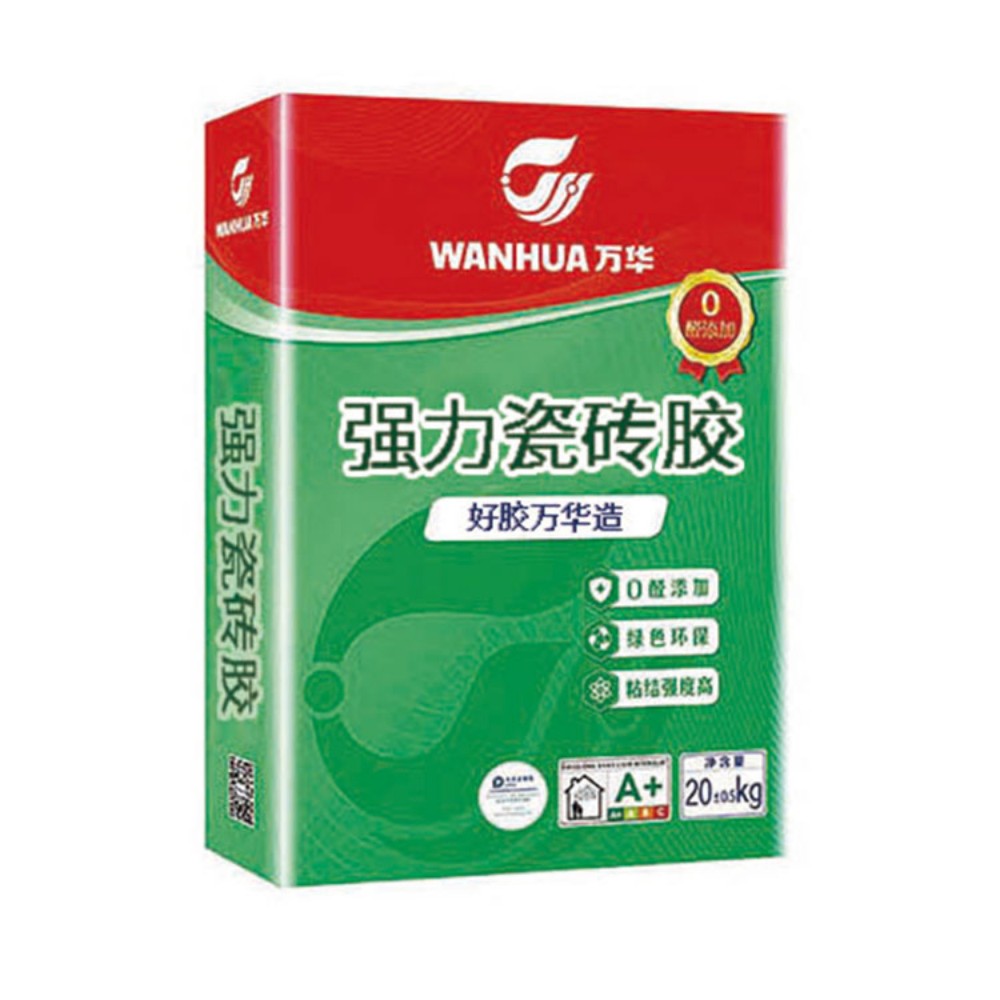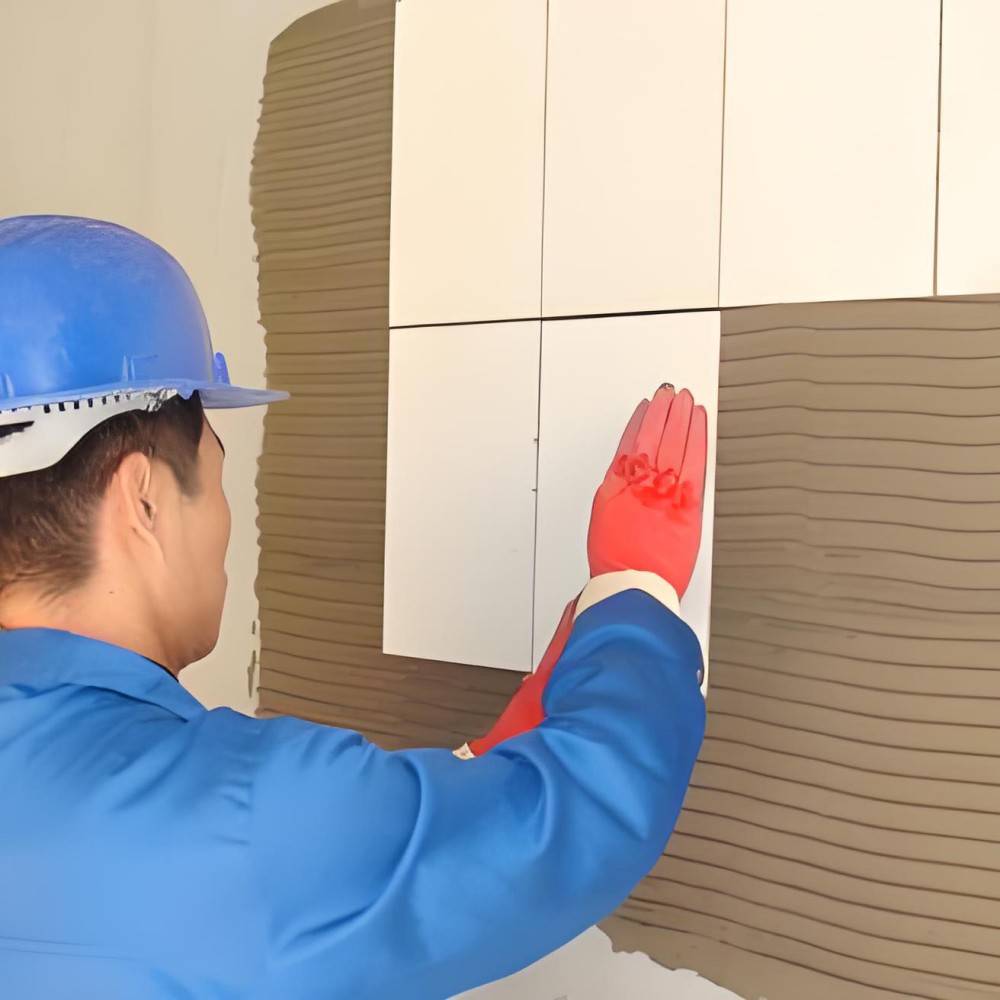

As a key material for pasting tiles in modern decoration, the performance of tile adhesive directly affects the firmness and service life of tile paving, and this is inseparable from the scientific and reasonable composition matching. Yantai Tile Adhesive Manufacturers share the detailed breakdown of the main components of tile adhesive with industry experience, helping everyone better understand this essential decoration material.
1. Core Cementitious Material - Cement
Cement is the core foundation for tile adhesive to gain strength. As an inorganic cementitious material, it gradually hardens after hydration reaction, providing stable support for the adhesion between tiles and the base. There are various types of cement commonly used in tile adhesives on the market, mainly including Portland cement, aluminate cement, sulphoaluminate cement and ferroaluminate cement. In actual production, manufacturers usually choose cement of type 42.5R or 32.5R. The performance parameters such as strength and setting time of these two types of cement can well meet the needs of tile adhesives in different construction scenarios, ensuring that tiles are not prone to falling off, hollowing and other problems after paving.
2. Key to Filling and Crack Resistance - Aggregate
Aggregate plays an important role in filling and enhancing crack resistance in tile adhesive. It can effectively reduce the cracking of mortar caused by shrinkage during the drying process, and at the same time, it can reduce the cost of tile adhesive and optimize the overall performance. Common types of aggregates are abundant, including natural river sand, artificial sand, fly ash, slag powder, etc. Among them, natural river sand becomes a high-quality tile adhesive aggregate due to its uniform texture and stable performance, but the moisture content and mud content must be strictly controlled during use. If the moisture content is too high, it will affect the setting speed and strength development of the tile adhesive; excessive mud content will weaken the bonding force between the aggregate and cementitious materials such as cement, reducing the bonding performance of the tile adhesive. However, special caution is required when selecting artificial machine-made sand, because the fine powder content of some artificial sand may be too high. Excessive fine powder will increase the water demand of the mortar, leading to an increase in the shrinkage rate of the tile adhesive after drying, which in turn affects its strength and even causes cracking.
3. Core for Performance Improvement - Redispersible Polymer Powder
Redispersible polymer powder is a key component to improve the comprehensive performance of tile adhesive. It can significantly improve the bonding strength, flexibility and weather resistance of tile adhesive, allowing the tile adhesive to maintain good performance in different environments. At present, the common types of redispersible polymer powders used in tile adhesives include VAE (vinyl acetate-ethylene copolymer) polymer powder, VeoVa (vinyl versatate) polymer powder and styrene-acrylic acid terpolymer polymer powder. After these polymer powders are mixed with cement and other components, through hydration reaction, a continuous polymer film will be formed inside the mortar. This not only enhances the bonding force between the tile adhesive and the tiles and the base, but also improves the flexibility of the tile adhesive, effectively relieving the stress caused by factors such as temperature changes and base deformation, and preventing tiles from cracking and falling off. At the same time, its good weather resistance also enables the tile adhesive to maintain stable performance for a long time in harsh environments such as outdoors or humid areas.
4. Regulation of Construction and Performance - Cellulose Ether
Cellulose ether mainly plays the role of water retention and thickening in tile adhesive. At the same time, it can adjust the rheological properties of fresh mortar and extend the open time of tile adhesive, providing convenience for construction operations. There are many types of cellulose ethers on the market, mainly including HPMC (hydroxypropyl methyl cellulose), HEC (hydroxyethyl cellulose), HEMC (hydroxyethyl methyl cellulose), etc. Most tile adhesives prefer to use HPMC hydroxypropyl methyl cellulose. Its water retention function can effectively prevent the tile adhesive from drying too fast and failing to fully hydrate due to excessive water loss during construction, ensuring that the cement can set and harden normally, thereby ensuring the strength of the tile adhesive. The thickening effect can improve the workability of the mortar, making the tile adhesive show a uniform and delicate state after mixing, which is convenient for construction and application. Extending the open time means that construction personnel have more time to adjust the position of tiles, improving construction efficiency and paving quality. In addition, when selecting cellulose ether, attention should be paid to choosing products with not too high viscosity. High-viscosity cellulose ether may lead to poor hand feeling during tile adhesive construction, such as knife sticking, which affects the construction progress and paving effect.
5. Natural Functional Additive - Lignocellulose
Lignocellulose is made from natural wood through chemical treatment, extraction and processing, and grinding. It has various practical functions such as water conduction, crack resistance and improving workability, which can further optimize the performance of tile adhesive. Its water conduction function can make the water distribution inside the tile adhesive more uniform, avoiding the impact of excessive or insufficient local water on the hydration reaction. The crack resistance can work together with the aggregate to further reduce the shrinkage cracks during the mortar drying process and enhance the overall stability of the tile adhesive. At the same time, lignocellulose can also improve the workability of the tile adhesive, making the mortar easier to mix and apply, enhancing the construction feel, and ensuring that the tile adhesive can closely fit the tiles and the base during paving, reducing the occurrence of hollowing.
In addition to the above main components, depending on different construction requirements and service environments, tile adhesives sometimes add different types of additives such as water reducers, thixotropic agents, early strength agents, expansion agents, and waterproofing agents. Water reducers can improve the fluidity of the mortar without increasing the water consumption, facilitating construction. Thixotropic agents can make the tile adhesive maintain high viscosity when standing to prevent flowing, and reduce the viscosity when mixing or applying, facilitating operation. Early strength agents can accelerate the setting and hardening speed of the tile adhesive, shorten the curing time, and improve construction efficiency. Expansion agents can compensate for mortar shrinkage and reduce the occurrence of cracks. Waterproofing agents can improve the waterproof performance of the tile adhesive, making it suitable for humid areas such as kitchens and bathrooms.
The above is the knowledge about the composition of tile adhesive shared by Yantai Tile Adhesive Manufacturers. It is hoped that it can provide useful references for everyone in the selection and use of tile adhesive. If you want to know more relevant content, please continue to pay attention to the manufacturer's website.

